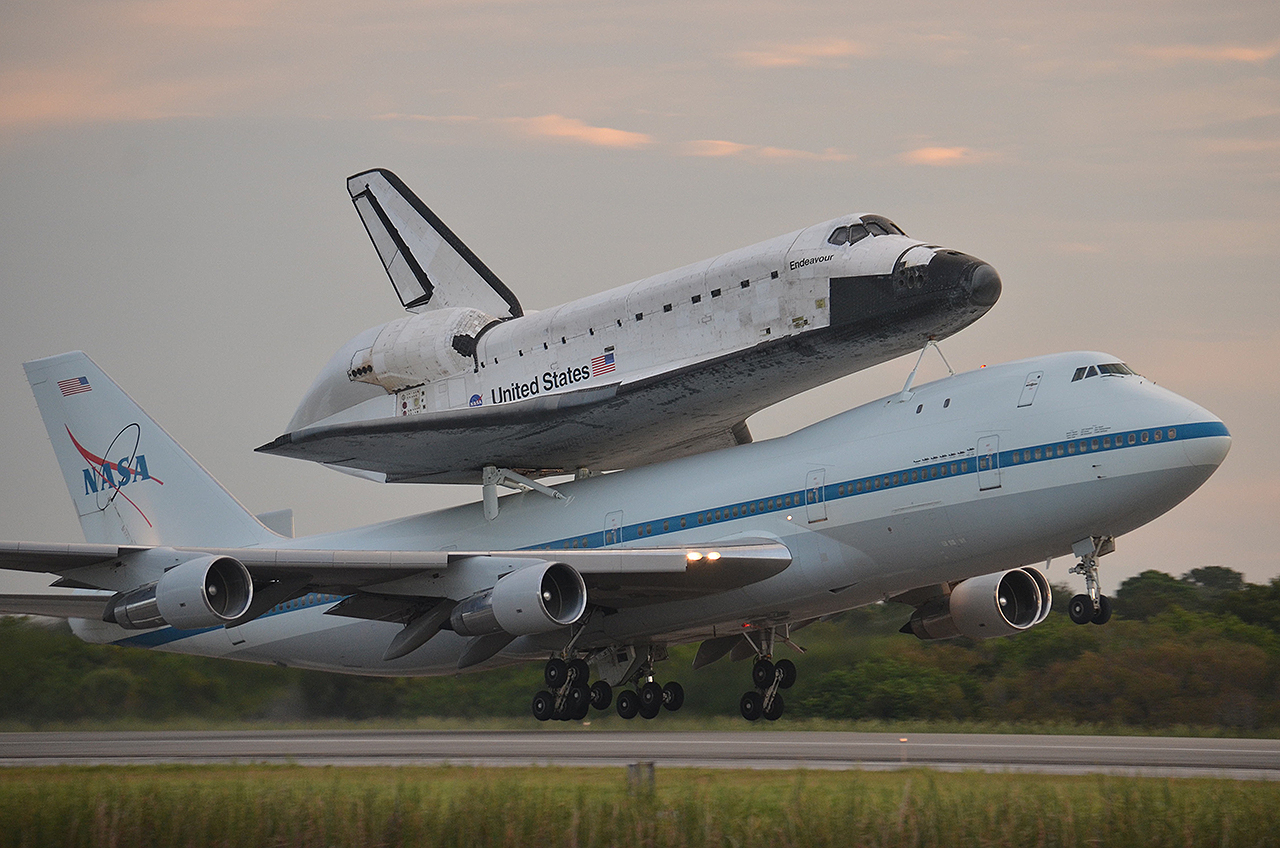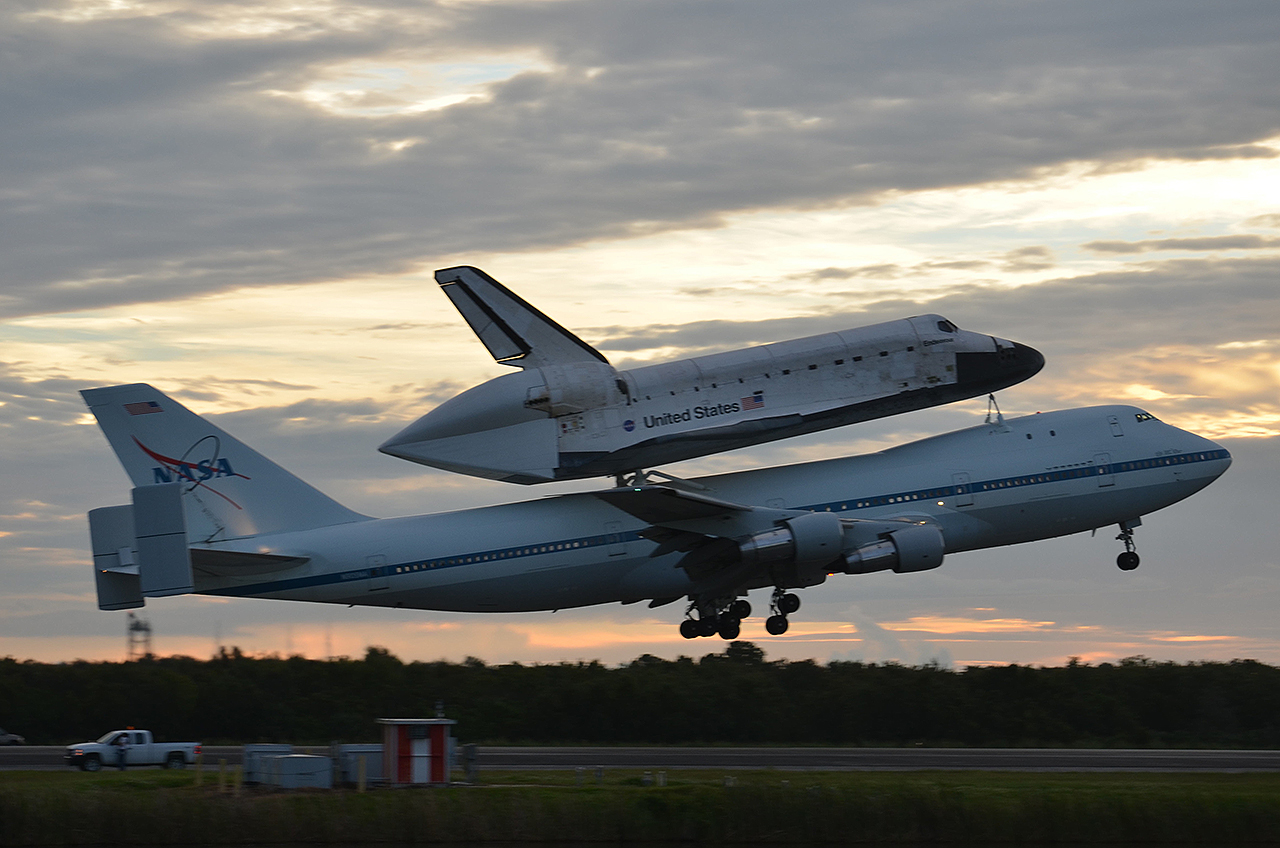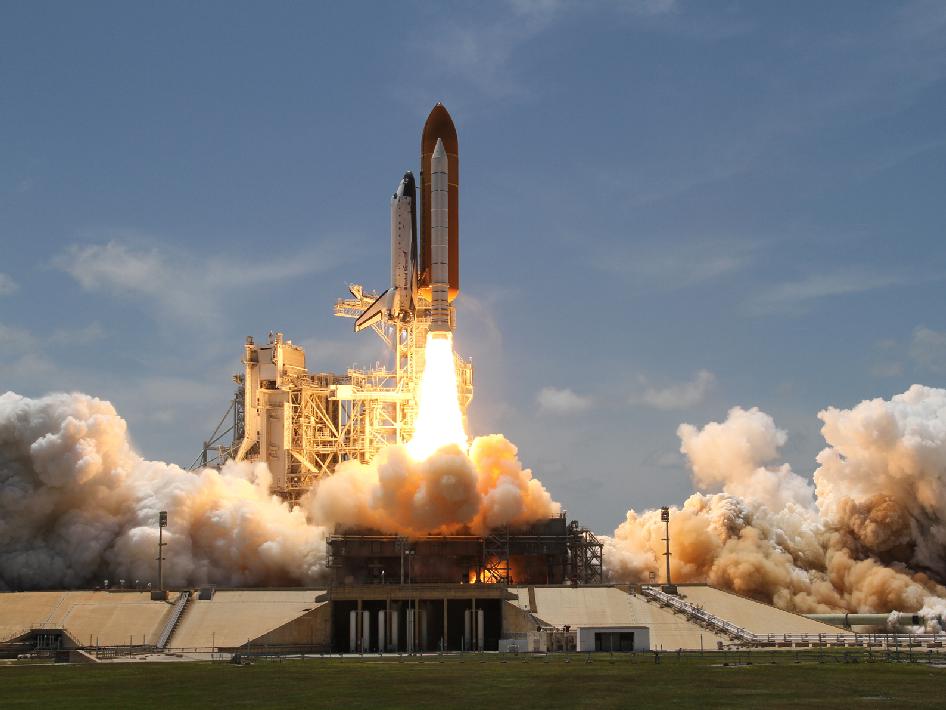Space Shuttle Endeavour Departs Florida on Final Ferry Flight

CAPE CANAVERAL, Fla. — For the last time in history, a space shuttle soared into the skies over Florida on Wednesday (Sept. 19). Rather than riding on rockets and heading into orbit however, the space shuttle Endeavour was mounted atop a jumbo jet and is destined for a California museum's display.
The retired orbiter, mated to the space agency's modified Boeing 747 Shuttle Carrier Aircraft (SCA) took off from the Kennedy Space Center's Shuttle Landing Facility, which was the same runway where Endeavour made its 25th and final return from space in June 2011. The 7:22 a.m. EDT (1122 GMT) liftoff marked the start of the final ferry flight for the 30-year space shuttle program.
After taking to the air, Endeavour, riding piggyback on the SCA, embarked on a series of flyovers of Florida's Space Coast. The air- and- spacecraft duo flew over Kennedy and its visitor complex, the Cape Canaveral Air Force Station and Patrick Air Force Base before returning to the landing facility for one last low pass. It then headed west to cross out of the Sunshine State.

Endeavour's final departure from Florida had been delayed twice by weather. The SCA with its last shuttle passenger aboard was originally scheduled to takeoff on Monday, but a low pressure front and associated thunderstorms along the planned flight path necessitated NASA postponing the takeoff to Wednesday.
In April 2011, NASA awarded Endeavour to the California Science Center (CSC) in Los Angeles for its permanent display. The ferry flight is scheduled to touch down at Los Angeles International Airport (LAX) on Friday (Sept. 21) at about 11 a.m. PDT (2 p.m. EDT; 1800 GMT). Before then, it will make flyovers and stopovers at NASA facilities and centers, as well as take scenic tours over many California landmarks. [How NASA Flies Shuttles on 747 Jumbo Jets (Photos)]
The first leg on Endeavour's cross-country trip is taking it Houston, the home of the space shuttle program, Mission Control and NASA's astronaut corps.
Endeavour's Ellington return
Get the Space.com Newsletter
Breaking space news, the latest updates on rocket launches, skywatching events and more!
After leaving Florida, the SCA with Endeavour is expected to follow the I-10 traffic corridor along the Gulf Coast, at times lowering to 1,500 feet (460 meters) to perform flyovers of the Stennis Space Center in Mississippi and the Michoud Assembly Facility in New Orleans. The two sites tested the shuttle engines and built the external fuel tanks, respectively.
The ferry flight is expected to enter the Texas Gulf Coast region between 9 a.m. and 10:30 a.m. CDT (10-11:30 a.m. EDT; 1400-1530 GMT) and fly near a variety of landmarks in the greater Houston area, including the George Bush Intercontinental and William P. Hobby airports as well as the downtown skyline and the San Jacinto Monument. The SCA with Endeavour will also navigate a low flyover of NASA's Johnson Space Center (JSC).
At approximately 10:45 a.m. CDT (11:45 a.m. EDT; 1545 GMT), the SCA is expected to land at Ellington Field in Houston and taxi to NASA Hangar 990. Public viewing of the aircraft and Endeavour will begin a half hour after the vehicles are safely secured and continue until 9 p.m. (10 p.m. EDT, 0200 GMT).
Endeavour's Ellington arrival on this, its final flight, brings this particular shuttle's history full circle. On May 9, 1991, Endeavour arrived at the same air field during a refueling stop on its very first ferry flight. Endeavour was on its way from California to Florida to be readied for its first mission, STS-49, which launched a year later.
Ellington Field is the aircraft operations base for Johnson Space Center. In addition to the SCA, Ellington supports NASA's Super Guppy cargo plane, the now retired Shuttle Training Aircraft (STA) Gulfstream jets, and NASA's fleet of T-38 two-engine astronaut training jets.
Go west, young shuttle, go west
Before the weather delayed its Florida departure, the SCA and Endeavour were to scheduled to stay in Houston for two days. Instead, the shuttle, atop the jetliner, will leave Ellington at sunrise on Thursday (Sept. 20).
Ellington's runway is not quite long enough to support a fully-fueled, shuttle-carrying SCA for this flight, and so the jumbo jet will make an additional re-fueling stop at Biggs Army Air Field in El Paso, Texas, before continuing on its way to southern California.
On the way, the SCA will make low flyovers of the White Sands Test Facility near Las Cruces, N.M., and NASA's Dryden Flight Research Center at Edwards Air Force Base in California, prior to landing around mid-day at Dryden. Both sites were former landing locations for the shuttles when they returned from space.
On the morning of Sept. 21, the SCA and Endeavour will take off for the last time and fly low passes over northern California, passing near NASA's Ames Research Center at Moffett Field and by various landmarks in multiple cities, including Sacramento and San Francisco. The aircraft with Endeavour will also fly over many Los Angeles landmarks before touching down at LAX.
Once on the ground and following a ceremony welcoming Endeavour to Los Angeles, the shuttle will be removed from the SCA and spend a few weeks at a United Airlines hangar undergoing preparations for transport and display. Endeavour will then travel through the streets of Inglewood and Los Angeles on a two-day, 12-mile (19-kilometer) road trip from the airport to the science center, arriving on the evening of Oct. 13.
Beginning Oct. 30, the shuttle will debut on display in the science center's Samuel Oschin Space Shuttle Endeavour Display Pavilion, beginning its new educational mission to commemorate past achievements in space and inspire the next generations of explorers.
Share your photos of the ferry flight with collectSPACE.com and SPACE.com! Send in your snapshots of Endeavour atop the Shuttle Carrier Aircraft to contact@collectSPACE.com and SPACE.com managing editor Tariq Malik at tmalik@space.com.
See shuttles.collectspace.com for continuing coverage of the delivery and display of NASA's retired space shuttles.
Follow collectSPACE on Facebook and Twitter @collectSPACE and editor Robert Pearlman @robertpearlman. Copyright 2012 collectSPACE.com. All rights reserved.
Editor's Note: This story was corrected to change "460 kilometers" to "460 meters."

Join our Space Forums to keep talking space on the latest missions, night sky and more! And if you have a news tip, correction or comment, let us know at: community@space.com.

Robert Pearlman is a space historian, journalist and the founder and editor of collectSPACE.com, a daily news publication and community devoted to space history with a particular focus on how and where space exploration intersects with pop culture. Pearlman is also a contributing writer for Space.com and co-author of "Space Stations: The Art, Science, and Reality of Working in Space” published by Smithsonian Books in 2018.In 2009, he was inducted into the U.S. Space Camp Hall of Fame in Huntsville, Alabama. In 2021, he was honored by the American Astronautical Society with the Ordway Award for Sustained Excellence in Spaceflight History. In 2023, the National Space Club Florida Committee recognized Pearlman with the Kolcum News and Communications Award for excellence in telling the space story along the Space Coast and throughout the world.










